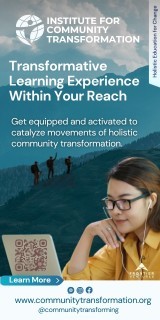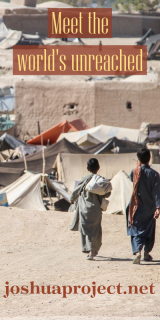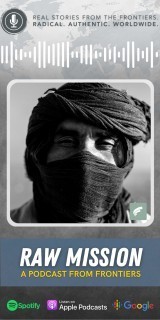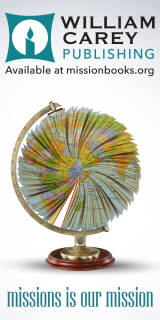How Many People Groups Are There?

One missionary learned that you have to "Take the plunge!" to find the answer
For 20 years Christian researchers have argued and speculated on the definition of a people group. How many there are, and how many are unreached? The Global Evangelization Database gives the number of ethno-linguistic peoples as 11,874. But within these are various dialects and other sub-groupings which may raise the number to 24,000. And herein lies the confusion between the numbers of unreached peoples given by different researchers.
Dr. Winter has asked me to write this article to give an example of how hard it is in the field to determine where the boundary lies between one people group and the next.
My example comes from my experience as a missionary in the highlands of Guatemala in the late -70s. My family and I moved into a Tzutujil Indian Village called Santiago Atitlan.
I will never forget my first plunge into Tzutujil culture. The first week I was there I went to the shore of the lake to fetch water. As I tried to push a plastic container under the water I lost my balance and fell into the lake. My daughters were screaming,"Are you all right, Daddy?" Tzutujil women were trying their best to hide their laughter at the lanky gringo trying to crawl out of an embarrassing situation.
I learned later that only women fetched water in that culture. That incident symbolizes how awkward I felt trying to navigate my way through a culture that was very different from my own.
My responsibility was to train leaders in 20 some churches located around Lake Atitlan. Those congregations spoke one of three Mayan languages, Cakchiquel, Quiche and Tzutujil. Cakchiquel, of course is where the people group movement all began. It was a Cakchiquel man who asked a young Cameron Townsend who was trying to sell him a Spanish Bible, "If your God is so smart, why can't he speak Cakchiquel?"
That question echoed in Townsend's mind until he finally translated the New Testament into Cakchiquel and eventually started Wycliffe Bible Translators to reach the other Bibleless peoples of the world. But as it turns out, after missionaries had lived among the Cakchiquels for a number of years, they began to realize that Cakchiquel was not just one of the more than 20 Mayan languages in Guatemala, but it was really a cluster of six different dialects. As a result, Wycliffe is now doing a simultaneous translation of the New Testament into all six dialects.
A very similar process occurred among the Tzutujil people, where I lived. Interestingly, Cameron Townsend was one of the first pioneer missionaries to bring the gospel to the Tzutujil people as well. One of the very first converts in Santiago Atitlan told me he remembers Townsend sleeping on the shore of the lake because the people would not let him sleep in the village. It was common for missionaries to be dragged through the streets by the hair, to be jailed, burned out, etc., in those early days.
The number of converts were very few at first. But there was a dramatic change in the lifestyle of the new believers. So even though the early believers were ostracized and persecuted, their positive testimony became the fuel that fed a genuine people movement among the villages around the lake.
In the early sixties, Jim and Judy Butler arrived in Guatemala to translate the New Testament into Tzutujil. They decided to live and do their translation work in San Pedrano de La Laguna because the Pedranos were more progressive and assertive than those in other Tzutujil villages. When we moved into Santiago Atitlan in the late 70s, the Butlers had just finished the New Testament.
I was delighted to have the New Testament in Tzutujil. But I very soon discovered that the Atitecos (people of Santiago Atitlan) did not want to use the Tzutujil translation. The only thing that separated the two villages was a volcano. But as I soon learned, the languages of the two groups were quite different.
In time, I came to realize that the problem was not even a problem of one group not understanding the other. The Atitecos could understand 90% of the translation. The problem was that it was from San Pedro de La Laguna and it sounded foreign to them.
I came to understand that one of the core values in the Mayan Culture is the pride in local traditions and a built-in resistance to anything foreign. Americans value progress and "building better mouse traps," but this is totally contrary to the way the Tzutujil think. For example, if a teenage girl decides to wear sandals in public for the first time, she will have to suffer ridicule for at least a week from her peers. Each village has its own distinctive dress for men and women as well as many customs that give them their own separate identity.
I came to the conclusion that a New Testament for the Western Tzutujil villages would be necessary to maintain an indigenous people movement among these people. I recruited my language helper to begin the translation. After I left the field, Jim Butler continued to supervise the helper and do the translation in the Western Tzutujil dialect. The translation was dedicated in September of this year.
So what originally was thought to be one people group came to be seen as really two, with two translations needed. The indigenous people movement continues to grow among these villages around the lake. Today, some 25-35% of the people are evangelicals. Translations in the various dialects will play an important role in maintaining that people movement for years to come, giving every individual the ability to hear the gospel and read the Bible in his or her own dialect.
This is just one example of what is going on around the world in hundreds of people groups. Missionaries do not really know how many people groups there are until they "take the plunge" and live among the people.
Larry Walker is the Southwest Regional Area Director for ACMC, an interdenominational agency working to assist and mobilize the American church for active involvement in missions.
All the pictures in this article are taken from the book,"Two Thousand Tongues To Go" by Ethel Wallis and Mary Bennett and used courtesy of Wycliffe Bible Translators, PO Box 2727 Huntington Beach CA 92647







comments